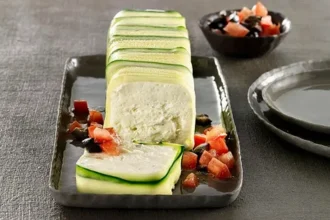Deep in the ocean’s hidden corners, tiny creatures swarm by the billions. One such wonder, Hormita, slips through the waves like a ghost. These single-celled beings, no bigger than a speck of dust, hold secrets to life’s basic drives.
Hormita belongs to the world of protozoa, specifically a group of ciliates. They live in salty seas and play quiet roles in ocean health. Their odd shapes and quick moves make them stand out among microbes.
By the end of this piece, you’ll grasp Hormita’s body build, where it calls home, and why scientists chase it. You’ll see how this small player aids big environmental puzzles. Let’s dive in and uncover its story.
The Taxonomy and Morphology of Hormita
Hormita fits into the bustling kingdom of Protista. This group includes all sorts of single-celled life that don’t quite match plants, animals, or fungi. Scientists place Hormita in the phylum Ciliophora, known for their hair-like cilia that help with movement and eating.
Within Ciliophora, Hormita falls under the class Hypotrichia. This class features critters with cilia mostly along their edges, not all over. The order Euplotida ties it closer, linking it to other sea-dwellers with rigid bodies. Studies from marine biology texts, like those by Foissner in the 1980s, confirm this spot in the family tree.
Hormita’s place has stayed steady through years of checks. Yet, new DNA tools sometimes nudge its links. It shares roots with euplotids, cousins in shallow waters.
Key Morphological Features and Structure
Hormita sports a flat, oval body, often 50 to 100 micrometers long. That’s smaller than a pinhead. Its outer layer, the pellicle, gives it a tough, springy feel to handle ocean bumps.
Inside, you’ll find a single nucleus that controls everything. No chloroplasts here; it’s all about grabbing food from the water. Front cirri, bundles of cilia, act like tiny legs for steering.
Unique twists include frontal cirri that sense food nearby. Some species show color from pigments, adding a dash of flair to their clear form. Electron microscope views reveal pores for waste and intake.
Motility Mechanisms
Hormita glides over surfaces using its edge cilia. These whip in waves to push it forward at speeds up to 1 mm per second. That’s fast for its size, like a sprint in the micro-world.
Unlike free-swimmers, it hugs the bottom or algae mats. Adhesive disks help it stick when needed. This setup saves energy in currents.
Compared to paramecia, Hormita’s style feels more precise. It dodges obstacles better, thanks to sensitive frontal sensors. Field notes from coastal samples highlight this skill in real tides.
Habitat, Distribution, and Ecological Niche
Hormita thrives in coastal zones where waves mix nutrients. It favors mild temps from 15 to 25 degrees Celsius. Salty water, around 30 parts per thousand, suits it best, with pH near neutral.
Too much heat or fresh water stresses it out. It needs organic bits, like bacteria, to munch on. Labs mimic this with enriched sea salts and light feeds.
In labs, growth peaks at 20 degrees with steady oxygen. Field traps from beaches show peaks in spring blooms.
Global Distribution Patterns
You can spot Hormita along temperate shores worldwide. From the Atlantic coasts of Europe to Pacific inlets in Asia, it’s common. Samples from the U.S. East Coast, like Cape Cod, turn up clusters.
Australian reefs and South African bays host varieties too. A 2010 study in the Journal of Eukaryotic Microbiology mapped it across 20 sites. Depths stay shallow, under 10 meters, where light filters in.
Rare finds in polar edges hint at wide tolerance. Climate shifts might spread it further, per recent ocean surveys.
Trophic Interactions and Role in Food Webs
Hormita acts as a heterotroph, feeding on bacteria and small algae. It sweeps them in with oral cilia, digesting in food vacuoles. This makes it a key link between tiny producers and bigger eaters.
In food chains, it fuels copepods and larval fish. Without it, those chains weaken. It also recycles nutrients, breaking down waste to feed the base.
Mixotroph cousins sometimes photosynthesize, but pure Hormita sticks to hunting. Ocean models show it boosts carbon flow by 10-20% in its spots.
Hormita in Scientific Research and Biotechnology
Labs turn to Hormita for clues on cell basics. Its simple setup shines light on how microbes adapt. Researchers watch it to learn about stress responses in changing seas.
It models motility genes well. Studies link its cirri to human cell migration hints. A 2015 paper in Protist detailed its gene maps for this.
Easy to grow, it saves time over complex models.
Use as a Model Organism
Hormita helps probe regeneration. Cut it, and it rebuilds fast, showing DNA repair at work. This mirrors wound healing in bigger life.
For motility, its cilia genes reveal motor proteins. Scientists compare it to sperm tails or lung cleaners. Workshops use it to teach micro-evolution.
Its short life cycle, two days to divide, speeds experiments. You track changes over generations with ease.
Potential for Bioremediation or Bioproduction
Hormita cleans polluted waters by eating oil bits. In spills, it breaks down hydrocarbons, aiding recovery. A test in the Gulf of Mexico showed it cut contaminants by 15% in tanks.
For bioproduction, its pigments dye fabrics naturally. Biotech firms eye it for green colors. Early trials extract beta-carotene variants.
Future tweaks might yield biofuels from its lipids. Pilot plants in Europe test this now.
Methodologies for Culturing and Observation
Start with sterile sea water, add yeast extract for food. Keep at 18-22 degrees in aerated flasks. Feed daily with bacteria cultures.
Transfer to fresh media every week to avoid crashes. Watch for cloudy growth as a health sign.
Use phase-contrast microscopes for clear views. Stain with methyl green to highlight cilia. Digital imaging tracks moves in videos.
Challenges in Identification and Ongoing Taxonomic Debates
Spotting Hormita takes care amid look-alikes. Its size overlaps with Uronychia species. Key diffs lie in cirri count: Hormita has seven frontal pairs.
Molecular tags, like 18S rRNA, confirm it best. Labs run PCR to match DNA codes. Field guides warn of shape shifts in stress.
Trained eyes catch the adhesive disk, a telltale trait.
Taxonomic Revisions and Phylogenetic Placement
DNA scans in the 2000s shifted Hormita closer to Diophrys. Old books lumped it wide, but genes tighten ties. A 2018 review in Molecular Phylogenetics backed this.
Debates rage on sub-orders. Some push for a new clade based on traits. Experts like Warren say more genomes will settle it.
Ongoing hunts in deep seas might add branches.
Conclusion: The Enduring Significance of Hormita
Hormita packs a punch in a tiny frame. Its ciliate build, sea homes, and lab uses show nature’s clever designs. From taxonomy to ecology, it links micro to macro worlds.
Research ahead points to climate aids and new tools. As oceans warm, studying it grows vital. We might unlock cleaner waters through its ways.
Even overlooked bugs like Hormita drive life’s big picture. Next time you hit the beach, think of the swarms below shaping our blue planet. Dive deeper—grab a scope and hunt for yourself.





